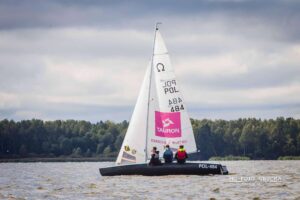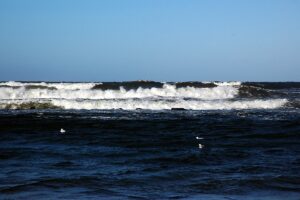The oil crisis of the 1970s, dependence on imports, and pollution of the environment – these are the three factors that determined Denmark to start the process of energy transformation over 30 years ago, ie the shift away from fossil fuels towards Renewable Energy Sources (RES). More and more investments show that withdrawal from fossil fuels can be profitable. The Danes have found their own way.
„Denmark is a small country, but big enough to show that energy transformation is possible,” said Iver Høj Nielsen, spokesman for State of Green. The organization was established in 2009 by private and public sector. Its work involves four ministries: the environment and nutrition, energy and climate, foreign affairs and the Ministry of Entrepreneurship and Business, as well as the confederation of Danish industry and the wind energy association. The Association brings together companies dealing in renewable energy, energy efficiency, water management, waste management, adaptation to climate change or integrated urban solutions.
The crisis gives birth to solutions
The aim of the association is to support smaller companies so that they can develop their technologies abroad. 600 companies concentrated in State of Green deals with 1,400 solutions. However, the energy transformation in Denmark did not start with the creation of the State of Green. As shown in the diagram below, in 2015, CO2 emissions were reduced by 38% compared to 1980, while reducing energy consumption by 8 percent. The success, however, lies in the fact that it has managed to achieve an economic growth of 70%.
However, the decision on the transition made almost 30 years ago was not without a reason. It was the period of the oil crisis in the 1970s. Denmark was then 99 percent dependent on energy imports. Environmental pollution caused by fossil fuels and dirty transport and related fears of the society grew. Extraction of oil and gas allowed to reduce dependence on energy imports. The government started supporting homeowners for thermal modernization, energy efficiency of buildings and, finally, energy savings. – There were also regulations regarding the heating of houses that had not been previously – said the spokesperson.
The search for new solutions has begun. – Research has begun in scientific institutions what else can be done. Wind energy, which then began to emerge at the beginning of transformation, did not exist 30 years ago. Now is a big boom and the next challenge is the offshore wind farms – said the Dane.
– We also started the political process of changing mentality and energy consciousness, which was done step by step. The crisis of the 1970s was a national challenge. Energy policy is a matter of utter importance. In the 1970s, we came to an agreement in the parliament on energy policy – said Nielsen. In 2012, another great agreement was reached in the Parliament regarding the abandonment of fossil fuels by 2050 and an increase in green energy production. This goal was supported by 95% of the parliament. This is important, because continuity is maintained in politics, and without it there will be no effects.
If Denmark decides to abandon coal before 2030, it will have to shut down coal-fired power plants. Currently, there are two, producing energy in co-firing with biomass. – If we decided to build new power plants, they would have to work for the next 30 years and it would be a change in energy policy – said the spokesperson. He emphasized how important is the consequence of implementing the plan regardless of the changes in the government.
Denmark still bases its mix on fossil fuels, which fill it in 70 percent, and 30 percent is RES. – We are the leader of change and yet we have a huge challenge in front of us. I am afraid that challenges in Poland are similar or even bigger. It is a huge challenge on the world.
There will be more and more of wind energy
The wind is about 76 percent of RES in Denmark. In 2015, 18 546 GWh were produced from RES. In the coming decade, the share of wind in RES generation will increase to 82%.
By 2020, the share of wind in energy production will amount to 50 percent. In the previous year, it was about 43 percent. – However, we are building new offshore wind farms that will meet this objective and replace obsolete installations at the same time. By the decision of the parliament from this year before 2030, another three offshore wind farms will be created, although it is not yet known exactly where, probably it will be the North Sea, where the wind conditions are better – he pointed out.
This is a process that will continue, and the challenge may be building 4-5 database centers in Denmark, Apple, Google and others. They are large energy consumers. According to Nielsen, it is difficult to say how much energy they consume, but it can be about 10 percent of total energy consumption in Denmark. He admitted that this country has a great location, because it can draw energy from the wind in the North Sea and is located between Norway and continental Europe, which allows to import energy at any time – We provide almost 99,97 percent of electricity on time, the blackout phenomenon does not occur to us. Sometimes it happens that the wind does not blow, but then we import energy from Sweden or Norway – emphasized the Dane.
When asked about gas as a support for the wind, he said that it is less emission fuel than coal, but as energy support it is better suited to energy imports from Norway or Sweden.
Funding from the North only for green energy
Another presentation worthy of attention was provided by the Nordic Investment Bank (NIB). It is an international financial institution of the Scandinavian and Baltic countries. It works for the prosperity and sustainable development of the Nordic-Baltic region. The mission is to finance projects improving the productivity and environmentally beneficial Scandinavian and Baltic countries.
The bank was founded by five Nordic countries in 1975 to overcome investment barriers and attract commercial loans. In 2005, three Baltic countries joined the NIB on an equal footing with their original members.
NIB also supports investments in Poland. It co-finances the construction of the Mysino wind farm by the Energa Group, as well as projects for the modernization and construction of new low and high voltage networks. It also supported the construction of an energy connection between Poland and Lithuania called LitPol Link. – There must be two interested parties for such cooperation. In our case, we offer long-term financing for projects, in line with our mandate to invest in green energy – said Søren Kjær Mortensen as one director of the facility. – We are discussing with other companies in Poland, including the energy sector, about potential investments, but I can not reveal the details – he said.
During the presentation he emphasized that the Bank invests and supports energy transformation through so-called environmental bonds. Most, as much as 53 percent. this type of support was obtained by entities in Sweden. Finland has gained 20 percent , Norway – 19 percent, and Poland – 2 percent. 29 percent it’s investments in RES, 24 percent – sewage treatment plants, 23 percent – energy efficiency of buildings. The bank has earmarked EUR 500 million for investments in green bonds issued by companies or municipalities in its member countries. These investments are used to finance projects that are environmentally friendly and contribute to mitigating climate change. The total amount of funds spent on July 12, 2018 is EUR 312 million.
Investments in 2011 -2017 reduced CO2 emissions by 935,000 tons annually, which corresponds to the removal of 760,000 vehicles from roads each year. When asked about investments in coal, a representative of the Bank stressed that obtaining external support for such projects could be a challenge. – There is no future for coal support in Europe. It will be extremely difficult to obtain external financing – he said.








